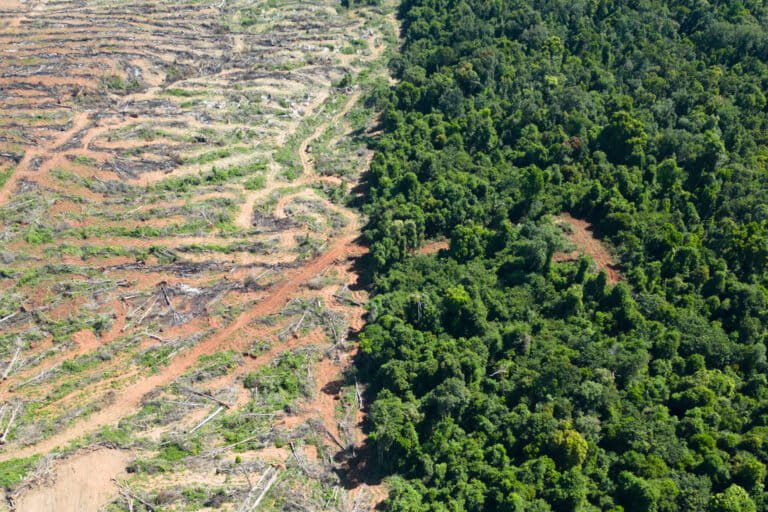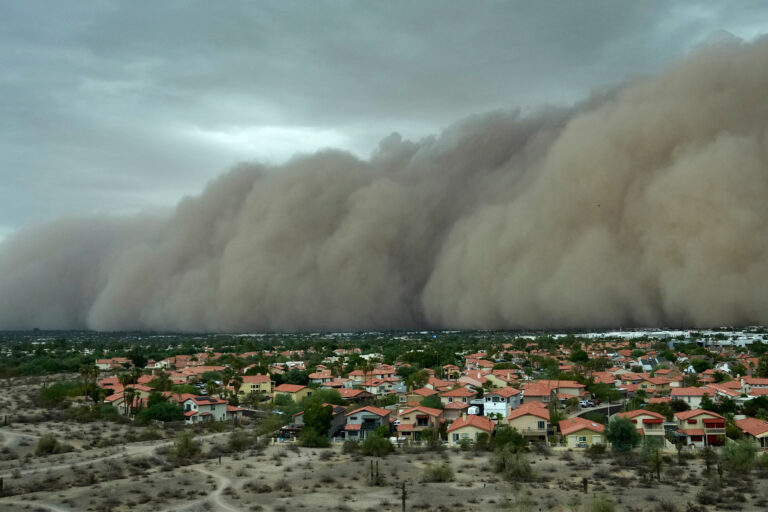Researchers find startling array of life in the ocean’s abyss.
Deep, deep below the ocean’s surface, in a world of ever-present darkness, one would expect few, if any, species would thrive. However, recent expeditions by the Census of Marine Life (CoML) have found an incredible array of strange, diverse, and amazing creatures (video and photos at bottom of article).
To date a total of 17,650 species are now known to live in frigid, nearly lightless waters beyond the photic zone—where enough light occurs for photosynthesis—approximately 200 meters deep. Nearly 6,000 of these occur in even harsher ecosystems, below depths of 1,000 meters or 0.62 miles down.
Just this year, CoML voyages to the Mid-Atlantic Ridge have collected remarkable specimens.
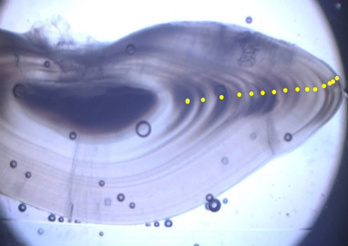 At 1,700 – 4,300 meters: Coryphaenoides brevibarbis, with tiny bones in its ear, known as otoliths, that have growth bands countable like tree rings to reveal the fish’s age. Comparison of age with size shows its growth rate and thus the amount of food in the neighborhood. Called the rat-tail, the fish lives on crustaceans it catches just above the seafloor. Photo courtesy of Rebecca Hunter. |
At 1,700 to 4,300 meters researchers found the strange fish called the rat-tail Coryphaenoides brevibarbis. With an elongated thin body the rat-tail does look like a rodent’s tail. Bones in this fish’s ears, called otoliths, can be read like tree rings: the otoliths grow a single band for every year, revealing the age of the fish.
The Mid-Atlantic Region expedition collected the largest ‘dumbo’ octopus to date. The specimen measured nearly two meters (six feet) across and weighted approximately 13 pounds. . As well as catching the largest specimen of Dumbo octopus ever recorded, researchers believe they may have also discovered a new species of Dumbo octopi.
Dumbo octopi, so named because they sport large fins that look like elephant’s ears, are primitive animals also known as cirrate or finned octopus. They are one of the larger animals that inhabit this dark world.
Discoveries like these have been occurring every year since CoML began its expeditions in 2000. For example, in 2007 a voyage to the Gulf of Mexico uncovered an oil-eating tubeworm. At 990 meters, a robotic arm on the deep sea vessel lifted up a tubeworm from a hole only to find that as the species was lifted away from the hole, crude oil spilled both from the worm and the hole. Scientists now know that this unique species actually feeds on the chemicals contained in crude oil.
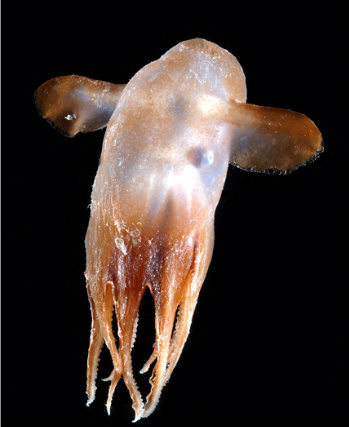 ‘New’ Dumbo (Grimpoteuthis sp.). Photo courtesy of David Shale. |
Like the crude oil-eating tubeworm, species in the deep must survive on novel sources of food, including organic droppings from sunlit regions and the corpses of large marine animals like whales.
At this depth species are discovered by high tech instruments like remotely operated vehicles or autonomous underwater vehicles, known as ROVs and AUVs respectively. Species are caught on camera, sonar, or scooped up by robotic limbs. Some species are even caught using trawls and dredges, which require several kilometers of cable to reach the ocean’s floor.
“The deep sea is the Earth’s largest continuous ecosystem and largest habitat for life. It is also the least studied,” says Chris German of Woods Hole Oceanographic Institution and ChEss (Biogeography of Deep-Water Chemosynthetic Ecosystems) co-chair. It is the least-studied because until recently there were few ways of actually reaching such depths, and even now the works is far from cheap or easy.
“Every deployment is a trip into the unknown, with often seasick scientists struggling to work amid high winds and 10 meter swells,” says Mireille Consalvey of the New Zealand National Institute of Water and Atmospheric Research, and CenSeam (Global Census of Marine Life on Seamounts) project manager. “It can be a tough environment down there. I recall once the abject fear when our video imaging system snagged for 40 minutes on a rock face—the slow, scary process of recovering it, and the shared worry that our valued recording equipment would arrive at the surface battered and bent. Thankfully, the recorder survived the ordeal better than many of us and yielded brilliant new footage of this remote realm.”
The payoffs, however, for so much time, energy, and funding can be huge. Recently scientists have discovered that the mud at the ocean’s floor may be as diverse as “tropical forests”.
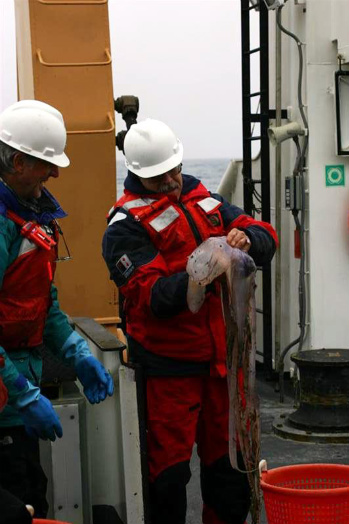 Jumbo Dumbo (Cirrothauma magna). Photo courtesy of Mike Vecchione. |
Mud-dwelling species on the ocean floor have proven hard to detect because they are extremely small and have a tendency to hide in the sediment. However, when found the variety is astounding: on a dive to the Southeastern Atlantic only seven species collected could be identified, while over the other 600-plus are likely new to science.
“The abyssal fauna is so rich in species diversity and so poorly described that collecting a known species is an anomaly,” says Census of Diversity of Abyssal Marine Life expert David Billett of UK’s National Oceanography Centre. “Describing for the first time all the different species in any coffee cup-sized sample of deep-sea sediment is a daunting challenge.”
According to Robert S. Carney of Louisiana State University such discoveries overturns our very understanding of diversity: “Some scientists have likened deep mud’s biodiversity to that of tropical forests. In college I was taught that high biodiversity is a function of habitat diversity – many nooks and crannies. It is, however, hard to imagine anything as monotonous, nook-less and cranny-less as deep-sea mud.”
Carney is co-leader with Myriam Sibuet of France of the Census project COMARGE (Continental Margin Ecosystems on a Worldwide Scale), which studies life along the world’s continental margins.
Yet even deep-sea ecosystems—miles below the surface—have been impacted greatly by human activity.
“There is both a great lack of information about the ‘abyss’ and substantial misinformation,” explains Carney. “Many species live there. However, the abyss has long been viewed as a desert. Worse, it was viewed as a wasteland where few to no environmental impacts could be of any concern. ‘Mine it, drill it, dispose into it, or fish it – what could possibly be impacted? And, if there is an impact, the abyss is vast and best yet, hidden from sight.’ Census of Marine Life deep realm scientists see and are concerned.”
Of CoML’s fourteen field projects—to explore and catalogue the world’s marine life—five of them are heading beyond the layer of light. These field projects alone incorporate 344 scientists from 34 countries.
When the census finishes up next October, CoML will have undertaken 210 expeditions in these harsh and surprising ecosystems below the light of the sun.
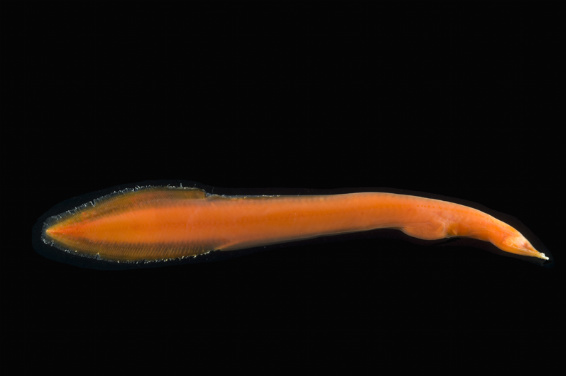
At 2,000 to 2,500 meters: A bizarre, elongated orange animal identified as Neocyema — only the 5th specimen of the fish ever caught and never before on the mid-Atlantic Ridge. Photo courtesy of David Shale.
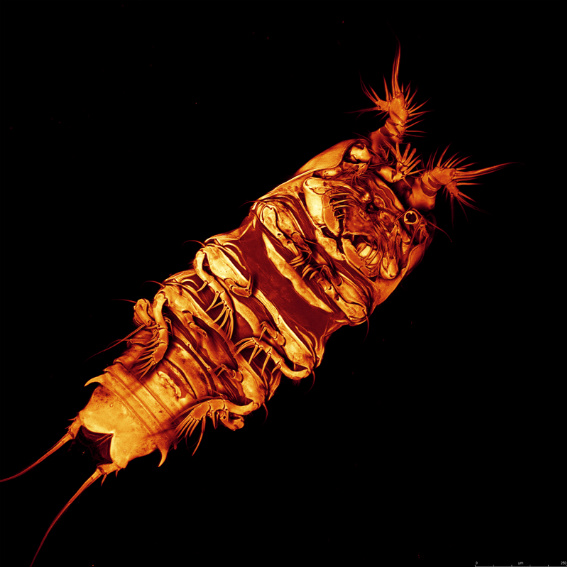
What appears to be an ancient gold treasure is a magnified crustacean, a tiny copepod collected this year from the Atlantic abyss (© Büntzow/Corgosinho).
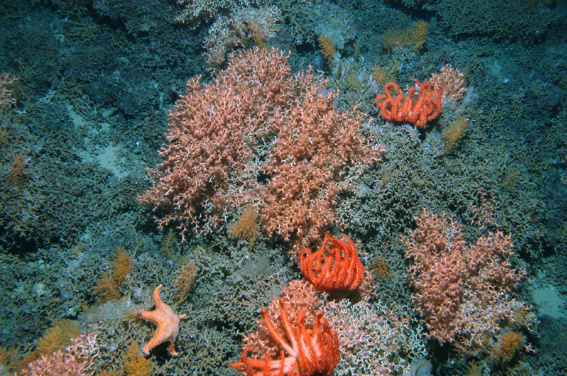
At 1,000 meters and below: abundant colorful coral. Photo courtesy of NIWA, New Zealand’s Ministry of Fisheries & Foundation for Research Science and Technology, and Land Information New Zealand.
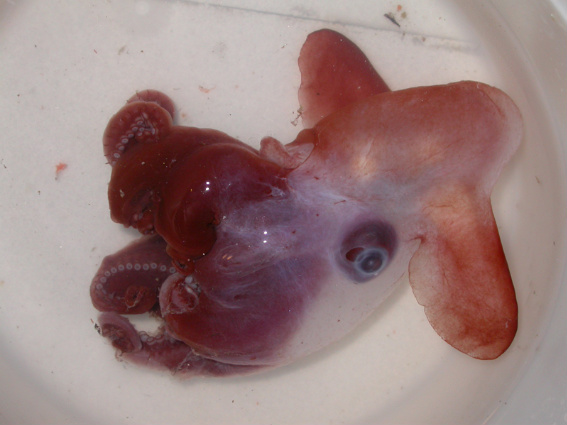
Cute Dumbo (Grimpoteuthis discoveryi). Photo courtesy of Mike Vecchione.
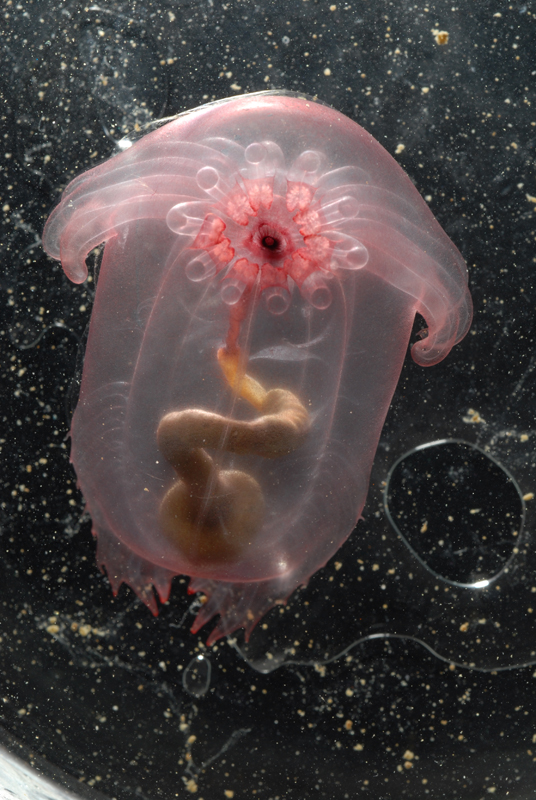
At 2,750 meters in the Northern Gulf of Mexico: an odd transparent sea cucumber, Enypniastes, creeping forward on its many tentacles at about 2 cm per minute while sweeping detritus-rich sediment into its mouth. Photo courtesy of Larry Madin, Woods Hole Oceanographic Institution.
Census Deep Sea Video, co-produced with National Geographic.
Census Deep Sea Creature Video, co-produced with National Geographic.
Related articles
Whale skeleton reveals species unknown to science
(09/22/2009) The importance of a whale to the oceanic ecosystem does not end with its life. After dying, a whale’s body sinks to the bottom of the ocean and becomes food for many species, some of whom specialize on feeding on these corpses.
Photos: new deep sea species discovered off the Canary Islands

(09/21/2009) Owned by Spain, but located just off the northwest coast of Africa, the Canary Islands sport a wide variety of marine life, including five species of marine turtles, ten species of sharks and rays, and innumerable fish and invertebrates. However, a new expedition has gone beyond the known, sending a robot to depths of 500 meters to discover the secrets of the Canary Island’s deep sea.
Newly discovered deep sea worms throw bioluminescent ‘bombs’

(08/20/2009) Researchers from Scripps Institution of Oceanography at UC San Diego have announced in Science the discovery of seven new species of deep sea worms, five of which drop orb-like parts of their body which cause a brilliant green display of bioluminescence. For this reason researchers have nicknamed them the ‘green bombers’. The worms are not just new species, but a clade of animals entirely unknown to science until now.
Ebay bidders to decide new shrimp’s name
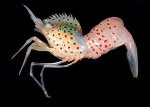
(03/24/2009) A new way to raise conservation funds has captured attention worldwide. The Australian Marine Conservation Society (AMCS) has auctioned the naming rights of a newly discovered species of shimp Ebay. “The shrimp is in the group or genus of shrimps known as Lebbeus, but is awaiting the addition of a unique species name,” said Anna McCallum, a Melbourne scientist who discovered the new species in deep waters off the Southwest coast of Australia.
Seven new species of deep sea coral discovered
(03/09/2009) In the depths of the Papahānaumokuākea Marine National Monument, which surrounds ten Hawaiian islands, scientists discovered seven new species of bamboo coral. Supported by the National Ocean and Atmospheric Administration (NOAA), the discoveries are even more surprising in that six of the seven species may represent entirely new genus of coral.
Photos: 13,000 species found in Arctic, Antarctic Oceans

(02/16/2009) A marine census has documented more than 13,000 species in the Arctic and Antarctic Oceans, including several hundred that may be new to science. Conducted over a two-year period under often perilous conditions — including monster waves and dangerous polar bears — the series of 18 surveys turned up a wealth of information on the diversity, distribution and abundance of marine life. The research will also help establish a baseline for measure changes in polar ecosystems.
Hundreds of rare and bizarre marine species discovered
(11/09/2008) The evolutionary origin of deep sea octopuses, new species populating an underwater “continent”, 12,000 amphipods crowding a square meter in the Gulf of Mexico, massive gatherings of white sharks in the middle of the Pacific: these are just a few highlights from the Census of Marine Life (COML)’s fourth report.









